Annual Report – Summer 2020
Challenges
Jennifer Harper, Reserve Manager
As I reflect on the past year, it is hard not to focus on our most recent challenge that we are facing. Unfortunately, COVID-19 is just one more item on the list of stressors we’ve experienced over the last decade. Much of the planning we’ve done at the Reserve, either through the disaster response plan or the management plan, addresses the impacts of disasters on the natural resources of the NERR and the impacts to our communities. COVID-19 is a unique challenge in that it does not have a direct impact on our natural resources, but rather just our human resources, changing how we do our jobs and interact with others.
It is interesting to think of our community’s ability to respond to disasters and ways to help prepare for events. We work with researchers to model the potential impacts of sea level rise, storm surge or rising temperatures to predict changes to our environment. But it is hard to predict the economic and emotional impacts to our local communities, and harder still to predict how behavior changes or interventions may lead to a better, or stronger (resilient) future condition.
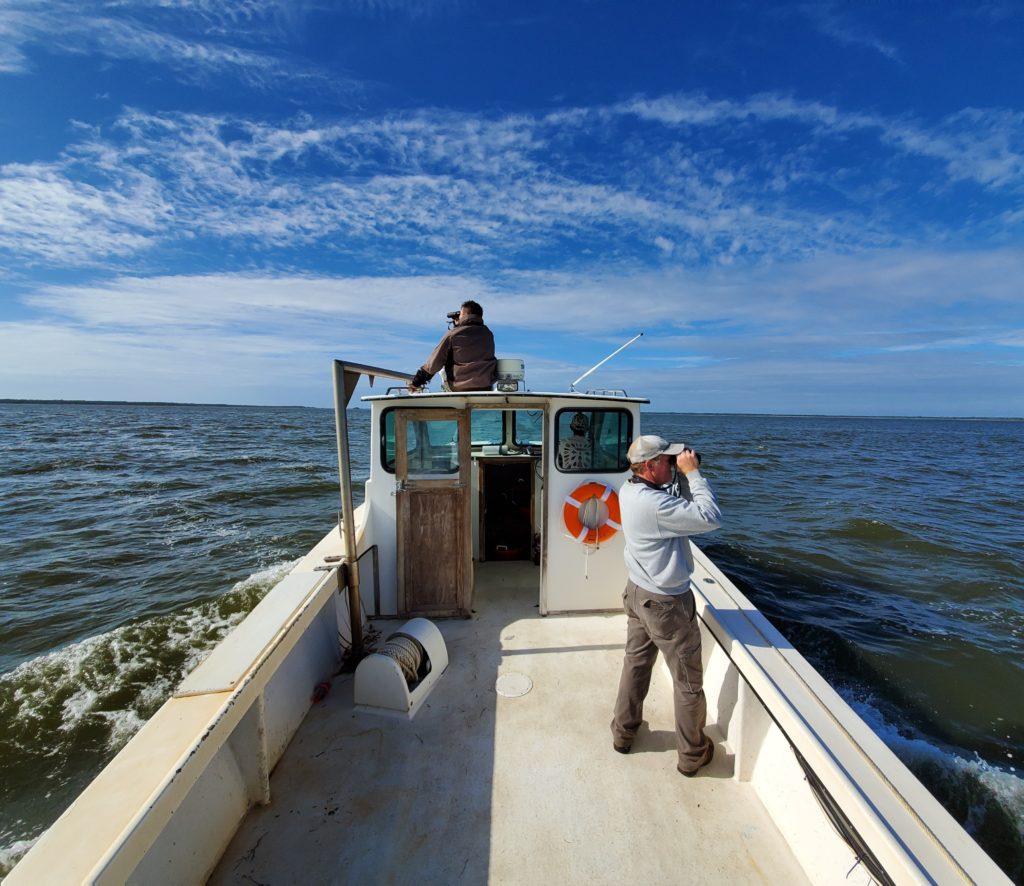
Our natural environment is an asset when challenges arise, serving as a buffer for destructive physical processes like storm surge or flooding. Living in one of the least-populated areas in Florida has benefited its residents during the COVID-19 epidemic. Distance has slowed the spread of the virus, and our open spaces provided a respite from long periods of quarantine. Generally, living near natural areas with access to outdoor recreation results in greater emotional and physical well-being, however how do we value or utilize these assets to be a more resilient community?
We have been able to continue to be productive and successful because we’ve been able to adjust to these new conditions. I believe that being flexible and forgiving is necessary for us to continue our work. During this time, I am even more appreciative of the people who make up our Reserve community, and by community, I mean the staff, our volunteers, our partners and the public. The staff have been incredibly adaptive to this situation, still managing to complete many of their on-going tasks under normal timelines. This has meant that they are creative with staying separate from each other and extra-careful when working together in the office or field. I know that it is stressful and exhausting for them as it changes every single one of their daily activities.
I am seeing a lot of changes in how we communicate with each other and our community. Since April, when we closed to the public, our education and coastal training programs have created videos to reach students, residents and visitors to further our stewardship messaging. These have included virtual field trips and recorded seminars which can be found on the Reserve website. We are making plans to host small student groups in the late fall and considering excursions that can ensure safe social-distancing while still providing meaningful experiences.
This Oystercatcher shows many of the accomplishments over the last year and demonstrates the creative and adaptive spirit of the Reserve staff and its programs. We have persevered over previous challenges and I have no doubt that we will be successful going forward. I look forward to the future when we can all be together again, but until then, stay safe.
RESEARCH & MONITORING
The Push For Positive Changes During Challenging Times.
Anyone who knows anything about the Apalachicola Reserve is aware the challenges we face as individuals and communities translate into challenges at the Reserve. We’ve had the ongoing Supreme Court hearings, the Deep-Water Horizon oil spill, followed by a fisheries disaster declaration to Hurricane Michael in 2018. And now, the devastating human and economic impacts of a world pandemic.
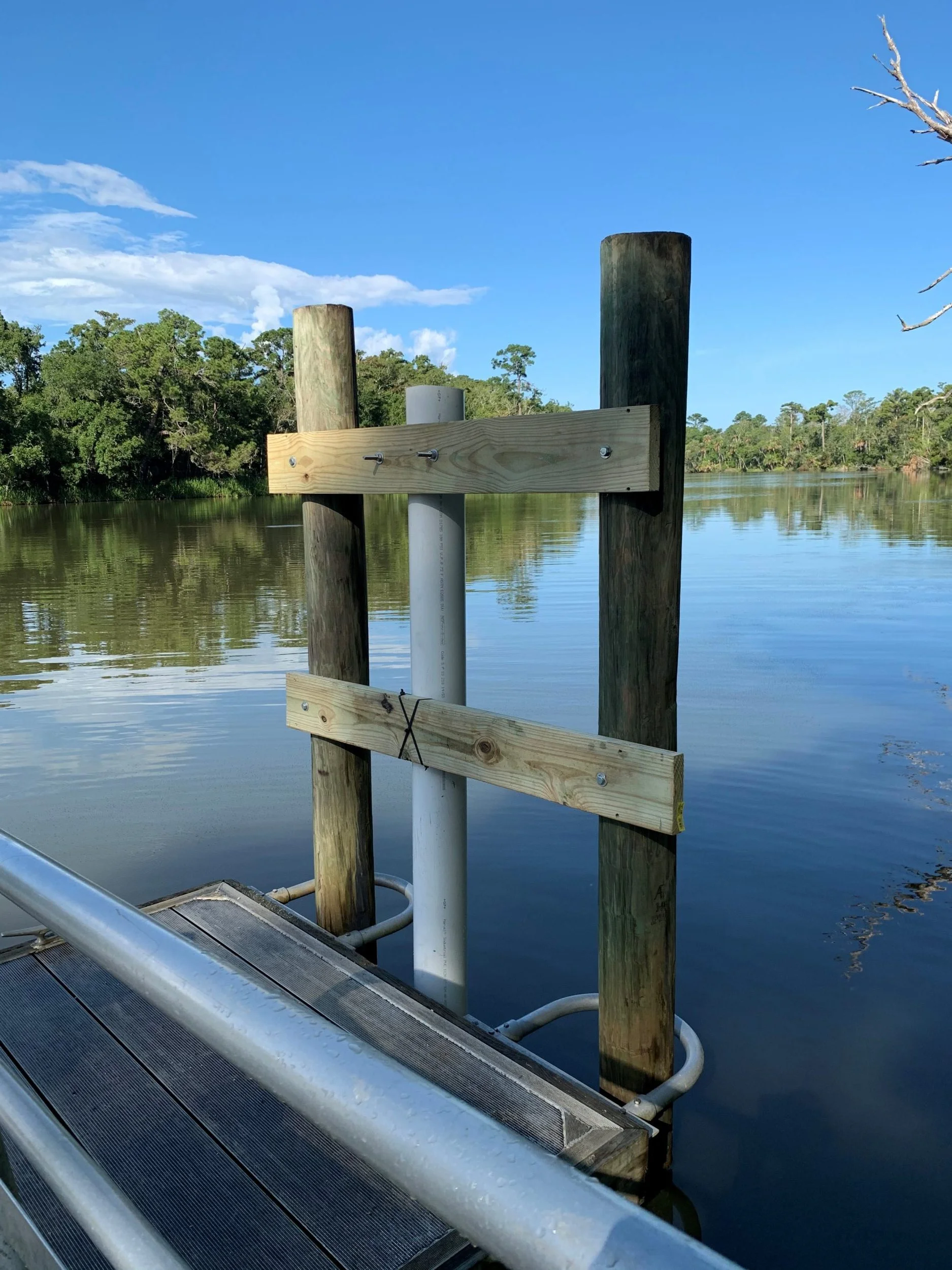
We often communicate about our estuary and how its resilience as a living and ever-changing habitat is important to the ecology of the bay and the economy of the people who rely upon it. Today however, we’d like to highlight the resilience and effort of the people who have invested their lives to keep this National Estuarine Research Reserve functioning as a true research entity. Despite the challenges faced, we remain a highly functional and efficient research team. Each has in some way, sacrificed personal spaces, property, and possibly health to ensure the work continues. We’re moving forward, we’re making progress. It may be slow, but these successes will be of infinite value in future research.
Nearly two years after the hurricane we’re nearing the completion of reconstruction efforts. The water quality towers at Dry Bar and East Bay will be completed this summer. We are currently logging water quality data and working on telemetry at the Dry Bar location and soon the East Bay tower will be collecting water data and telemetry. The new Cat Point Tower is fully operational with telemetry available for those who enjoy our real-time applications.
This summer Research staff began installing the new water quality monitoring site at Butcher Pen Landing. Working with the Apalachicola River Keeper, the Reserve will provide water quality monitoring at the lower East River. This monitoring will be an element of the River Keeper’s investigation of the efficacy of geomorphologic restoration of sloughs. This site will meet NERR’s standards and protocols and with public support will be added as a secondary System-Wide Monitoring Program site.
The biological monitoring program is progressing well. In December 2015 we began a zooplankton sampling study, alongside our system-wide nutrient monitoring. Zooplankton play an integral role in estuarine and coastal food webs. Until recently, we processed these samples the old-fashioned way, time consuming way - a physical count and identification of each organism. In May we purchased FlowCam, a machine designed to aid rapid identification and enumeration. This will enable our biologists, visiting researchers, and students to process samples with greater efficiency.

The annual meeting always brings a lot of productivity for Research at the NERRs. One example is the NERRs Science Collaborative grant, which solicits proposals from researchers who are seeking funding to conduct collaborative work with multiple Reserves. This year Research Coordinators from multiple NERRs, including Apalachicola successfully applied and were recommended for funding. The project, titled "Detecting Impacts from Climate Change across Multiple Scales: A National Synthesis of Tidal Marshes," will utilize the Reserve’s marsh vegetation monitoring data to investigate changes in marsh communities within each Reserve as well as among multiple NERR sites. The project is related to our Sentinel Sites for Climate Change initiative and will build upon existing data that has already been collected.
Reserve staff continue to coordinate with researchers from outside the NERR. One example is a collaboration with researchers from Pennsylvania State and Columbia Universities to investigate metabolism and gas exchange in the Apalachicola estuary. This three-year study funded by the National Science Foundation will utilize ANERR and other NERRs’ System-Wide Monitoring Program (SWMP) data, particularly dissolved oxygen, to improve quantification and understanding of primary production and respiration at the ecosystem scale. These processes, collectively referred to as ecosystem metabolism, are simple, integrative indices that can be used to quantitatively track short-term variability and long-term change in the overall ecological condition in our estuary.
Lastly, and one of the year’s top achievements, was the selection of our first Margarette A. Davidson Graduate Fellow, Kira Allen of the University of Central Florida. Kira and her major professor, Dr. Kristy Lewis were selected by NOAA and the Reserve panel to develop a model for examining trophic interactions of species. The model will be used to investigate key linkages between system-wide environmental and biological programs. Kira will use our existing juvenile fishes and invertebrate data, SWMP data and recent information on biomass and diet for this project. We’re excited to have to opportunity to return to hosting graduate students at the NERR and work on these collaborations.
These are a few of the many projects the Research folks have in progress. If you’re interested in more information, please stop by and visit us. This work could not have been accomplished without our staff. As a team manager I’m fortunate to have the dedicated effort of my research colleagues, Megan Lamb, Ethan Bourque, Emily Jackson, and volunteer coordinator Janice Becker. Thank you... and we’ll get through this just like we always have.
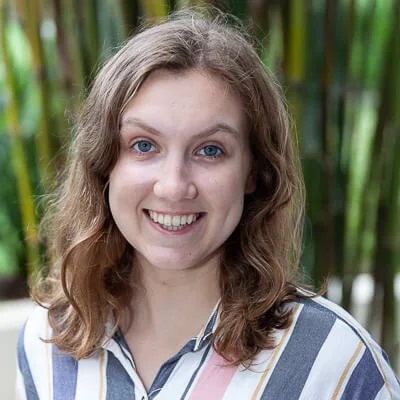
STEWARDSHIP
The Stewardship Program’s primary goal is to protect and restore resources on Reserve-managed lands from factors which degrade natural communities and affect adjacent water quality. The team focuses on habitat management and mapping, listed species monitoring, invasive species control, land acquisition, protection of cultural resources, facilitation of public use/access, outreach, restoration, and several other system-wide efforts. The Stewardship sector, along with the other Reserve programs, take care in managing upland and aquatic resources and promote conservation of the area’s natural biodiversity through applied research and education. The program relies on partnerships with local land managers and regional agency groups to meet the common goals of conservation across a unique landscape.
Resource Management - The Stewardship team continued to work towards reintroduction of prescribed fire, where possible, and mitigating for wildfire risk on several Reserve-managed lands. Staff participated in conducting a 2.5 acre “structural protection” burn surrounding the Marshall House Field Station on Little St. George Island. Staff are trained members of RCP’s fire team led by Dylan Shoemaker, manager of the St. Joseph Bay State Buffer Preserve (Port St. Joe).
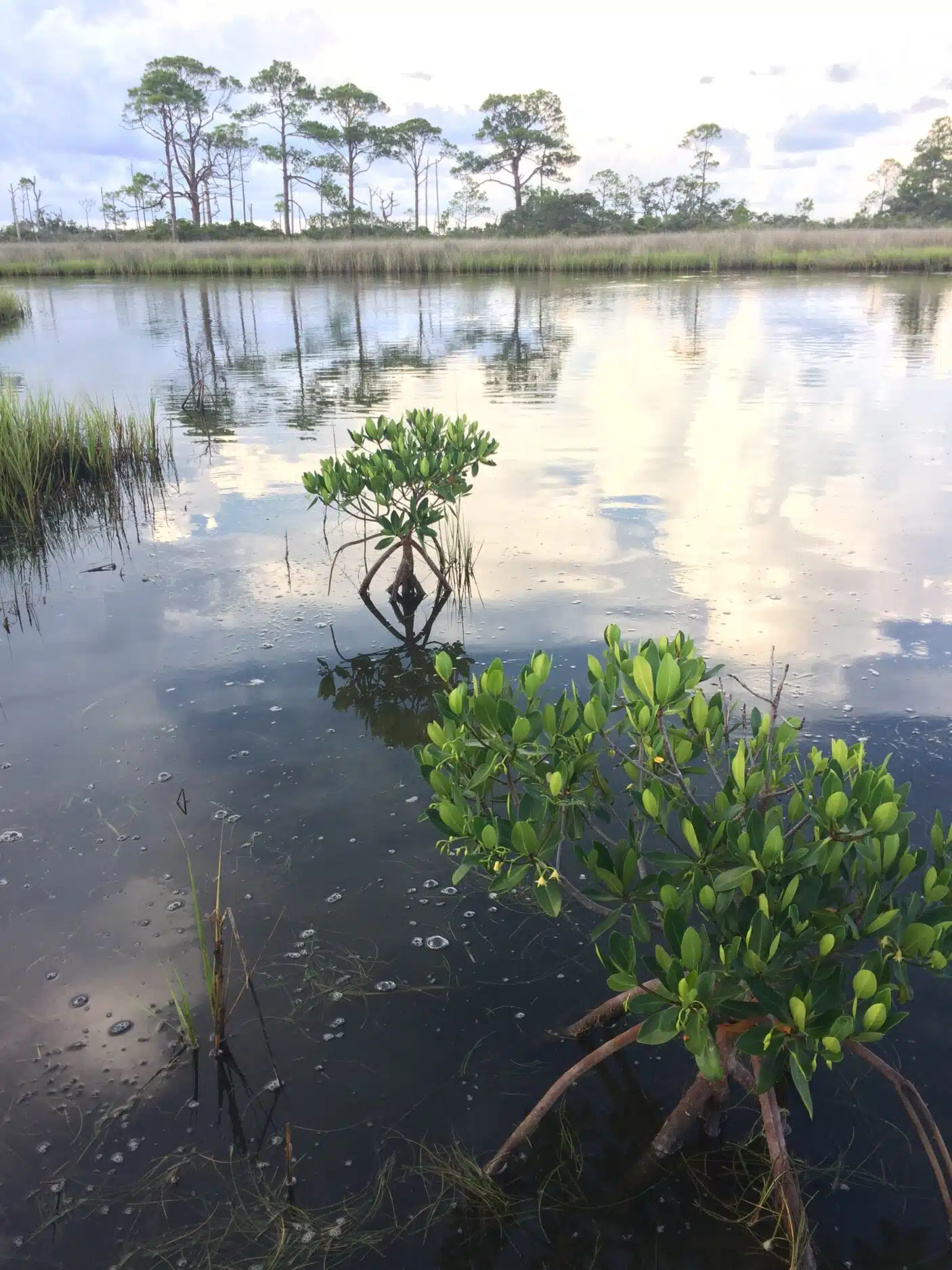
Mapping and monitoring of mangroves continues with collaborating researchers. Both red (pictured here) and black mangroves are distributed throughout Franklin County.
Across the wildland-urban interface (WUI), staff also continued to better establish fire breaks bordering managed lands and reduce hazard trees along property lines. Staff expanded the 2016-2019 baseline mangrove mapping effort by synthesizing the spatial data towards a scientific publication, collaborating with mangrove researchers, and continuing to conduct annual monitoring at 20 transects. This research investigates mangrove establishment and recruitment along the Northern Gulf of Mexico.
Stewardship staff continued to monitor select listed species within the Reserve, working with Audubon Florida and FWC to monitor shorebirds and nesting sea turtles, respectively. Staff also assisted with sign posting at nesting sites, completion of the NRDA funded project at the SGI Causeway Critical Wildlife Area, and annual field surveys (Christmas Bird Counts, FWC winter shorebird survey).
In 2019, two loggerhead sea turtles nested on Carrabelle Beach, a rare occurrence. In October, staff had a public nest evaluation event with local community members to promote beach habitat and species conservation. They collaborated with USGS researchers to conduct gopher tortoise population surveys (Little St. George) and survey coastal waters for diamondback terrapins.
The program completed its sixth year of biannual, long-term monitoring of emergent marsh vegetation on the Little St. Marks River and Little St. George Island; and both winter and summer photopoint monitoring was completed across 31 stations.
Efforts continued in management of invasive species like popcorn (tallow) tree, rattlebox, camphor tree, air potato, and beach vitex. Staff used mechanical and chemical control solutions and collected spatial data on occurrences and treatments. A workshop for local land managers was held to increase awareness of beach vitex.
Staff conducted annual surveys to monitor cultural and historical resource sites within the Reserve. The known, but undocumented, 1854 Leland gravestone site was added to the state’s master file.
Public Use & Facilities - A new half-mile primitive loop called “Cat Point Trail” was added to the Reserve’s trail system along with a new kiosk. Staff partnered with the Conservation Corp team to repair parts of Scipio Creek Boardwalk in Apalachicola towards dedication to Woody Miley, past ANERR manager.
Interpretation signage, brochures, and information kiosks continued to be updated following Hurricane Michael (October2018) and pandemic shut down (spring 2020). Eleven kiosks are now established at access points. Following the completion of the Cat Point living shoreline, improvements were made to the end of the road and a split rail fence were installed at Millender Park.
Staff also conducted the yearly maintenance of the Government and Marshall docks and improvements to the Marshall House on Little St. George Island. All sites are open this fall, perfect for exploring coastal habitats.
Restoration & Acquisition - Stewardship and the Conservation Corp of the Forgotten Coast completed a 250’ living shoreline at Sawyer Street on St. George Island. Native plants were planted to stabilize the shoreline and improve habitat.
The Reserve and Central Panhandle Aquatic Preserve monitored the completion of the Cat Point living shoreline at the Reserve’s headquarters.
Reserve staff serve as the Chair of the Panhandle Estuarine Restoration Team (PERT) Steering Committee. The group hosted its second annual membership meeting in March. PERT facilitates initiatives directed at restoration and enhancement of estuarine habitats along the Florida Panhandle and provides a platform for coastal restoration practitioners to collaborate and share knowledge and resources. A three-year PERT Action Plan has been developed with a priority on restoration activities.
The Reserve incorporated a 1.5-acre parcel at Pelican Point on St. George Island into the boundary. With the acquisition of this parcel, a dead-end road was closed for restoration with foot traffic access still available.
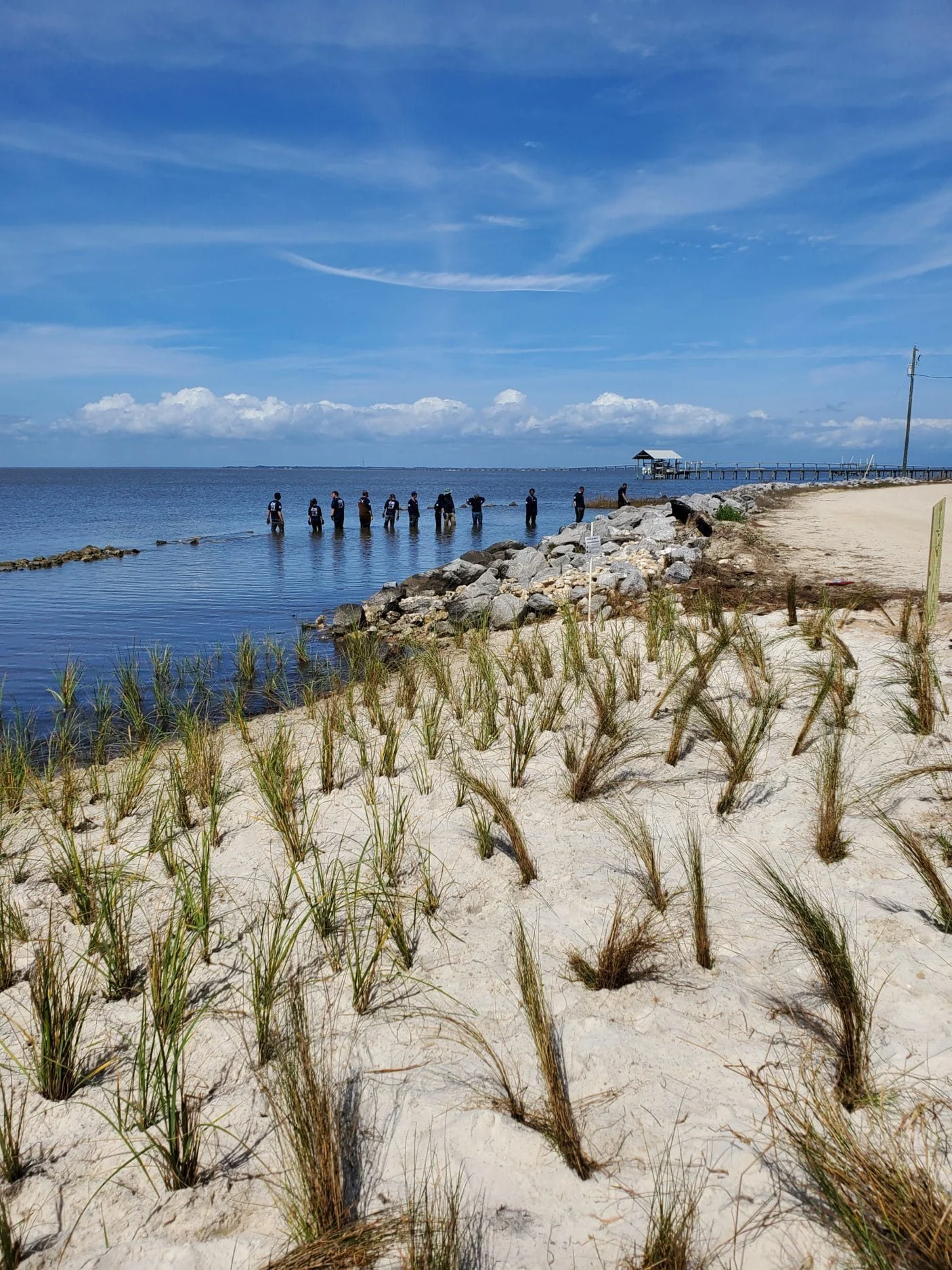
New Faces & Old Partners - This was a year of transitions in Stewardship with Kim Wren to Assistant Manager and Caitlin Snyder to Stewardship Coordinator. Peyton Aubin, a 2019 sea turtle intern, joined the team as Stewardship Assistant I and field coordinator for sea turtles and shorebirds. Lastly, Kelly Joyner came aboard spring 2020 as a GIS/Stewardship Specialist II.
Participation continued in the Apalachicola Regional Stewardship Alliance (ARSA) and other regional groups, collaborating on land management issues, conservation activities, land acquisition proposals, restoration efforts, prescribed fire efforts and invasive species monitoring. Staff provided input on the McKissack Beach management plan, a 300+ acre property leased by the City of Carrabelle and owned by DEP.
EDUCATION
Last year 19,317 people visited the Reserve Nature Center or took part in educational programs provided by Reserve staff. The majority was from 16,670 walk-in visitors. Staff-facilitated educational programs for student and adult groups accounted for the remainder and represented another busy year working to foster stewardship of the Apalachicola Estuary.
Group Programs - The first three quarters of the fiscal year, July through March, had our staff very busy addressing our primary mission, to educate communities and decision-makers to improve stewardship, resilience and sustainability of the Apalachicola River and Bay System. The primary venue for activities has been the Reserve’s center in Eastpoint, including our outdoor classroom and regular sessions at Cat Point behind the Reserve’s Nature Center. Programs are also conducted on lands managed by the Reserve partners including the U.S. Forest Service and Florida DEP’s Division of Recreation on St. George Island. Overall 2,647 people participated in staff-led activities at the Reserve.
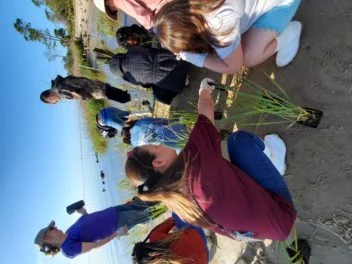
School Activities - The primary focus is our field programs with K-12 students and teachers in Franklin County. The rural nature of the district provides a unique opportunity in that each year every student in pre-k, first, third, fifth and seventh grades participate in standards-aligned ANERR Education programs with focus on the ecology of Apalachicola Bay and its value to the community.
Fall and Winter programs were busy facilitating sessions and leading activities:
- Pre-k, A Home for Hermit Crab
- First grade, Beach Scavenger Hunt
- Third grade, Saltmarsh Seining and Oyster Discovery Dig
- Fifth grade, Living Shoreline Restoration and Monitoring
- Seventh grade, Salt Marsh Food Webs, the Ecological Adaptations of Spartina and the Life of Monarchs
Special thanks to our Friends of the Reserve for providing funding for transportation and substitute teachers to allow local schools to participate in ANERR Education Programs. Overall 450 local students participated in our education programs.
Presentations - This year our summer Turtle Talks were rescheduled and renamed Turtle Tuesdays. Thought this summer’s offerings were cancelled due to pandemic concerns, last summer saw a full house every Tuesday afternoon. More than 500 visitors attended the 2:00 pm talks. A great benefit of this schedule change was that it allowed for our natural history lecture series, Reserve Wednesdays, to continue on a regular basis throughout the year. These talks occur on the third Wednesday of each month, also at 2:00 pm. Public programs included topics such as the ecology of sharks, life on loggerhead sea turtles, Florida butterflies, black bears, eagles, the Florida Wild Mammal Association, shorebirds and oyster aquaculture. This year the Reserve Wednesday public lectures were attended by 478 people.
Teacher Training - Education staff at the Reserve participated in three Teachers on the Estuary (TOTE) programs this year. These professional development programs are a component of the National Reserve System, part of the National Oceanic and Atmospheric Administration (NOAA). The goal of TOTE is to improve teachers’ and students’ understanding of the environment using local examples and to provide resources and experience to support the incorporation of estuary and watershed topics into classroom teaching. The course is also designed to promote stewardship of watersheds and estuaries. This year Reserve staff hosted a workshop and assisted with workshops at both of our Florida partner Reserves, Rookery Bay and Guana Tolomato Matanzas. Teachers participated in a diverse range of activities that emphasized fundamental components of an estuary that connect as essential components to support productivity of the system. Highlights included sessions on prescribed fire, marine debris, sea level rise, estuarine ecology, water quality monitoring, inquiry-based teaching, interpreting data and interpretation for students with disabilities including sight, speech, autism and cognitive disabilities.
Estuaries Day - Estuaries Day is one of the programs that the Reserve designed to focus on local residents during seasonally low visitation periods. This year’s event attracted nearly 1200 visitors, with 30 staff and over 75 volunteers coordinating and staffing activities organized to support awareness and understanding of estuaries. The Reserve is grateful for the support of this celebration by businesses and community groups.
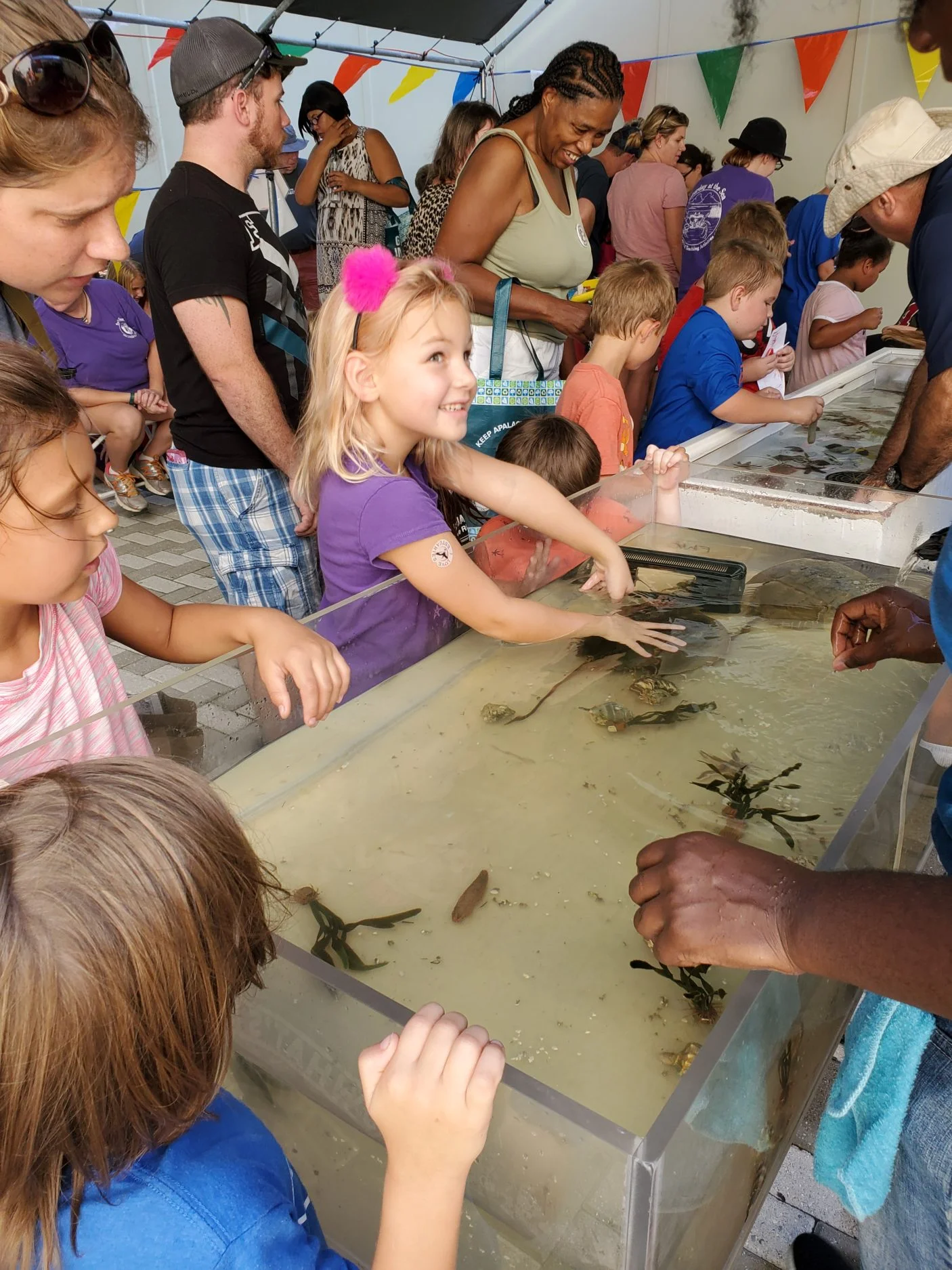
2019’s Estuaries Day attracted nearly 1200 visitors,with activities organized to support awareness and understanding of estuaries
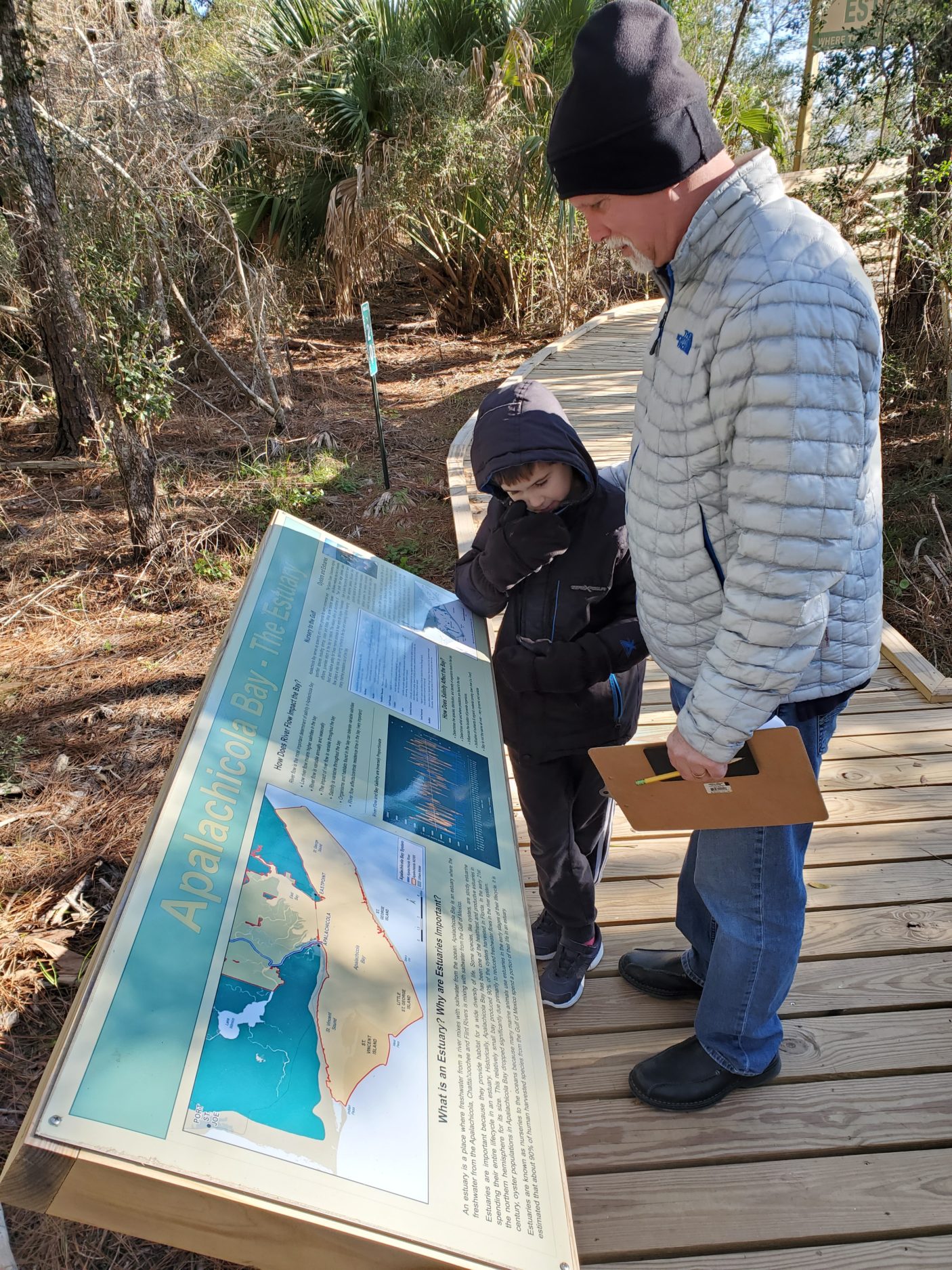
The new Watershed Walk is designed as a model for visitors to travel downstream from the headwaters of the Chattahoochee and Flint Rivers to the mouth of the Apalachicola River.
ANERR’s New Watershed Walk - A new outdoor exhibit, the Watershed Walk, was installed this year at the Nature Center.
Constructed along the boardwalk connecting the butterfly garden to the bay overlook, it is designed as a model for visitors to travel downstream from the headwaters of the Chattahoochee and Flint Rivers to the mouth of the Apalachicola River.
The scale along this section is six inches to the mile, so the 530 river miles from the headwaters to the bay is covered in 270 feet on the boardwalk. Mile markers denoting landmarks such as cities, towns and dams along the rivers help visitors track their journey.
There are seven signs on the Walk that cover a wide range of topics related to water usage in the ACF watershed. Water usage and the resulting reduction of freshwater that flows into the Apalachicola Bay estuary have been the focus of legal battles between Georgia, Florida and Alabama for the past three decades. These are complicated and sometimes contentious issues. Whose water is it? How should it be used? How should water in the system be managed? These questions are now being argued before the U.S. Supreme Court.
The Watershed Walk is designed to give visitors an opportunity to better understand who the water users are and the impact that the ever-increasing water withdrawals are having on the system as a whole and on Apalachicola Bay in particular.
COASTAL TRAINING PROGRAM
The Reserve’s Coastal Training Program (CTP) brings assistance, resources and trainings to decision makers to assist in implementing sound coastal management policies to protect resources vital to health of our estuary, our economy and our way of life. We attend regular meetings to assess needs and strengthen our partnerships.
We provide science-based trainings and information on land management issues, resiliency, climate change and adaptation for a variety of professional groups.
We offer courses designed to expand knowledge and increase preservation of habitats, natural and cultural resources. Our stewardship series includes Bay-Friendly Landscaping, Oyster Ecology, Apalachicola River and Floodplain, and Estuarine Ecology, and Living Shorelines for Homeowners.
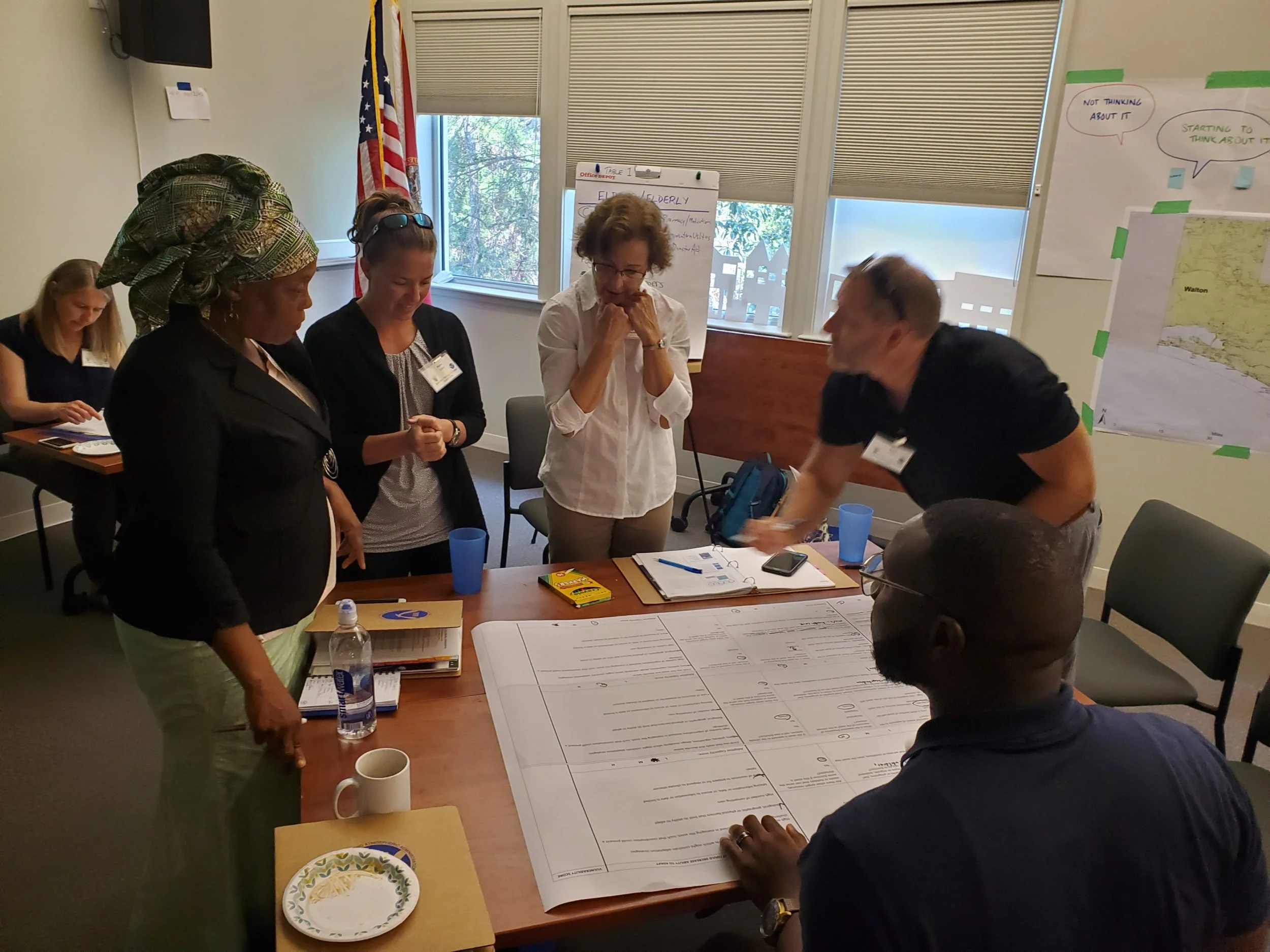
This year we delivered 86 hours of training in nineteen formal training programs to 236 participants. Eleven trainings were cancelled due to the pandemic. We hosted our first virtual training in May, Exploring Sea-Level Rise Science: The RAD Approach.
Other highlights include NOAA-lead training, Adaptation Planning for Coastal Communities, at which community planners from throughout the panhandle learned practical skills for incorporating adaptation strategies into their planning processes. The Sci-Café series, science in an informal setting, was revived with events in January and February.
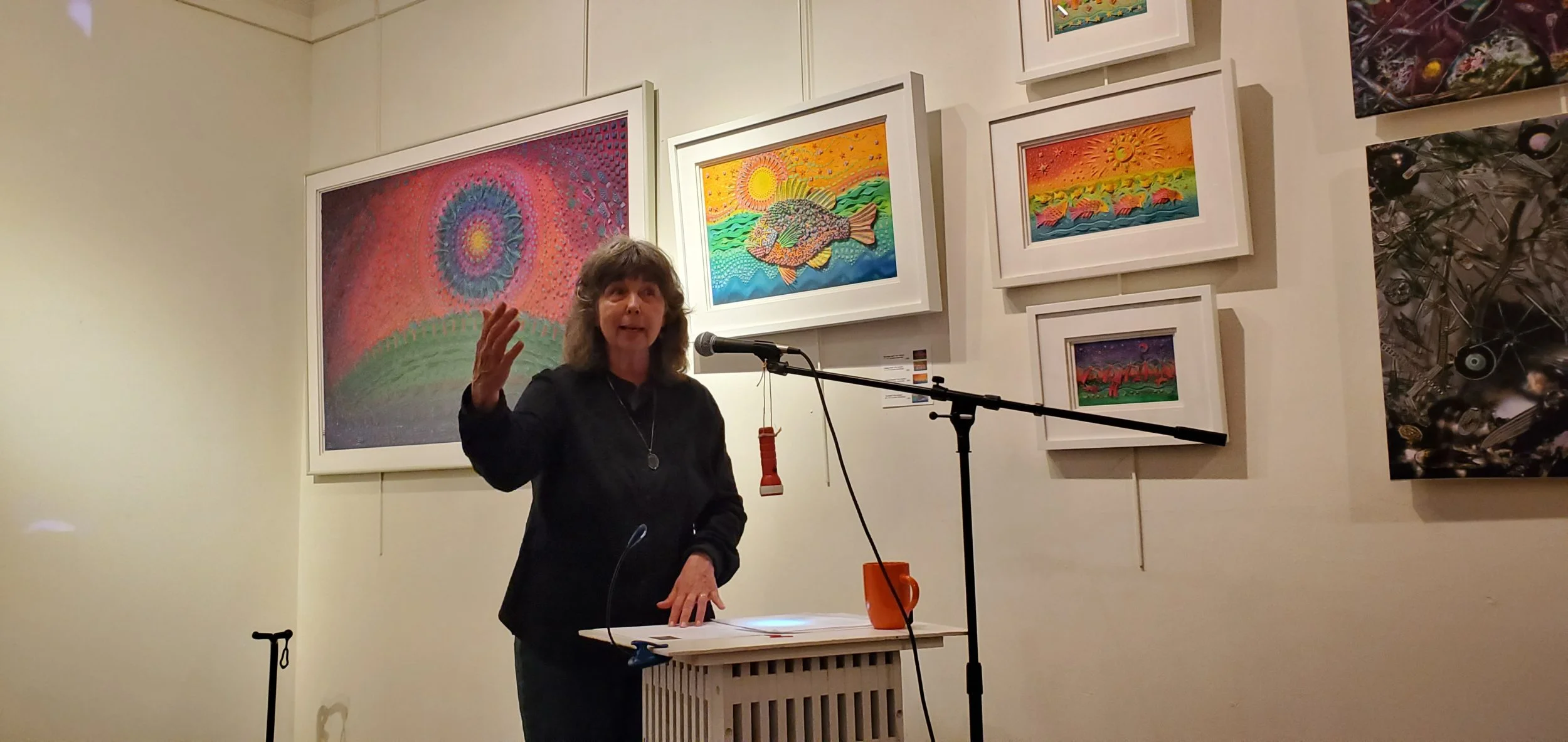
Technical Assistance - The Coastal Training Program coordinates technical assistance, resources and funding to city, county, community organizations. We partnered with the City of Apalachicola on a $52,000 grant, Achieving Resilience Through Hazard Mitigation: Applying Mitigation Measures to Apalachicola Vulnerable Historic and Economically Significant Resources. It funded a study and recommended mitigation measures to floodproof or elevate important structures vulnerable to flooding and sea level rise as detailed in FEMA documentation and the 2017 Apalachicola Vulnerability Study. This project stemmed directly from a CTP workshop held February 2019 with expert Rod Scott to discuss options for elevating and floodproofing structures.
Work Groups - Staff participates in local, regional and statewide groups to increase the capacity of the community or group. Examples include:
- Serving on the Franklin County Local Mitigation Strategy (LMS). This committee maintains an list of possible mitigation projects to help Franklin County implement infrastructure projects.
- Partnered with graduates of the Florida Master Gardener’s Program and the IFAs Extension office and Friends of the Reserve to recognize homeowners using bay-friendly practices.
- Worked with the City of Apalachicola and the Apalachicola Planning and Zoning board to pass an ordinance regulating fill placed on lots in the city to eliminate stormwater issues.
- Collaborated with the Franklin County Tourist Development Council to produce articles for their summer newsletters.We produced a radio show and video to highlight good practices to help endangered sea turtles during the nesting season.
- Continue development with FWC of a statewide training course on living shorelines for marina contractors. The first training was held in Tampa in October.
- Help coordinate the Panhandle Estuarine Restoration Team (PERT) with representatives from the Florida Fish and Wildlife, National Wildlife Service, SeaGrant, USCAE, NOAA OCM, TNC and other regional land managers. PERT is a community of practice designed to share techniques, funding resources, best management practices, lessons learned, and help identify barriers and priorities among restoration practitioners. The group formed to help increase the use of living shorelines in the panhandle and develop best practices.
Meeting Needs - The CTP Coordinator attends meetings of the Franklin County Commission and Apalachicola City Commission, and Apalachicola and Franklin County Planning and Zoning hearings. We consult on the Northwest Florida Water Management District Surface Water Improvement Plan the Apalachicola Area of Critical State Concern Workplan.
Getting the Word Out - CTP and Communications staff uses emails, Eventbrite workshops, Facebook, web-based community calendars, local newspapers and radio, chambers of commerce, and Friends of the Reserve social media sites.
Performance Measures - Program participants fill out a two-page evaluation after each course. These evaluations are analyzed to gauge the effectiveness of our programs and are submitted the NOAA Coastal Training Program Performance Database. Participants are also asked to tell us what future trainings they would like to see offered.
Engagement with National, Regional and Local Partners - The Reserve’s Coastal Training Program Coordinator and the Coastal Training Program Specialist attended all CTP national conference calls and webinars. This year the Coordinator attended the NERR annual meeting in South Carolina and Social Coast in February. We also collaborate with the two other Florida Reserves CTPs, at GTM and Rookery, on a quarterly basis.
